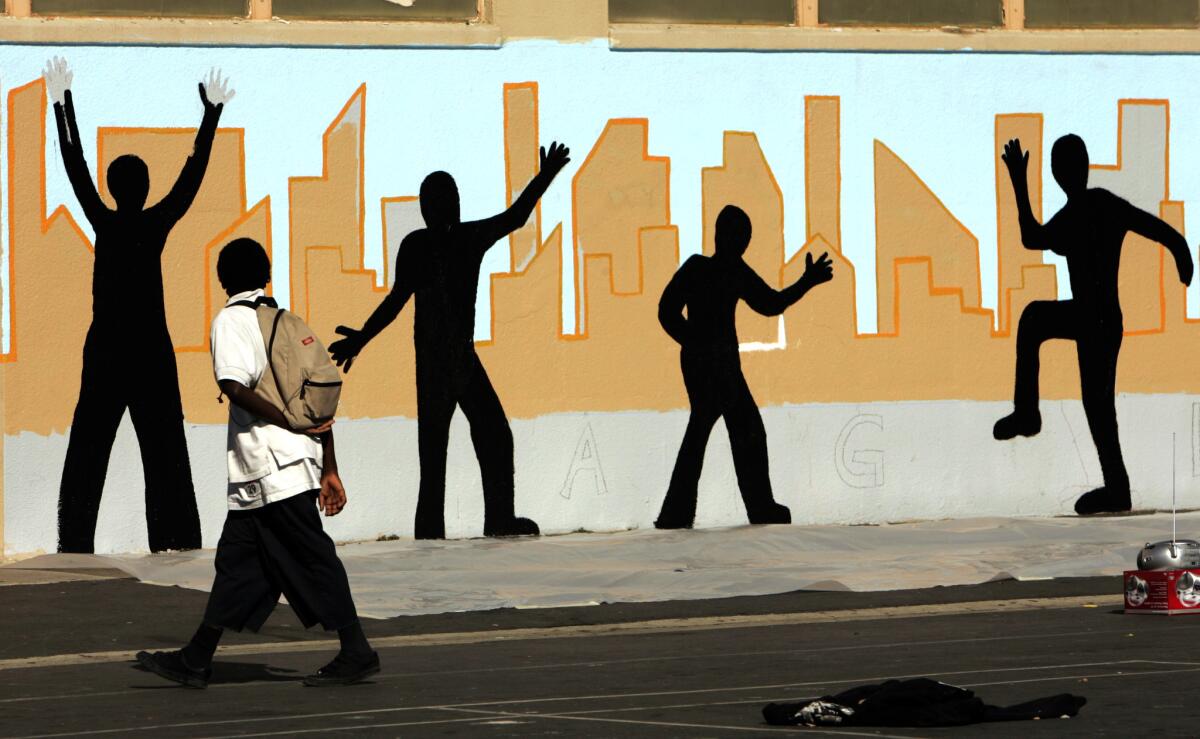Introducing the California School Dashboard, your new guide to understanding your child’s education

Parents of California, get ready for a change.
On Wednesday, the state will unveil the California School Dashboard, a new color-coded way to look at how your child’s school is doing and compare it with other schools.
The idea behind the website is simple: Parents need more information than they’ve been getting.
Whether the dashboard provides the right information and whether it presents it clearly enough already are subjects of debate.
The last version of state school ratings was the Academic Performance Index. Each school was given a number based on test scores. Those numbers were so clear, they drove real estate decisions — where to buy to be in a school district — as well as real estate prices.
But API drew fierce criticism from teachers and advocates, who felt that the complex mix of factors that go into whether a school is considered good or bad could not be boiled down that way.
The state suspended API in 2014 when it began using new standardized tests aligned with the Common Core. Still, the old API Web page remains one of the California Department of Education’s most-visited, a consultant told the State Board of Education this month. The board and its contractor, WestEd, have been trying to figure out API’s replacement — and soliciting comments about the possibilities — for several years.
Some advocates and community groups wanted to include information about such things as school climate, a measure of how safe students feel in school; discipline rates, to hold schools accountable for suspending some students at higher rates than others; and attendance information, because chronic absenteeism is a telltale sign of a potential future dropout.
Next week, when the pilot version of the dashboard goes live, visitors will be able to search for a school and find something called an “equity report” on its page. The report includes how a school performed on standardized tests in English and math; the progress English-language learners are making toward proficiency; suspension rates; and graduation rates. Links let people find out more about each area, including how particular groups of students are doing.
Down the road, more information will be added, including measures of school climate and how prepared students are for college, and potentially scores on science tests.
A school will receive a color for each of these areas. Blue is the best, red is the worst. The color will appear in a ball next to each category, with the degree of shading meant to convey the level of achievement. Schools will not receive overall colors.
Where API was clear but crude, some critics call the Dashboard complex and confounding. The group Parent Revolution has proposed an alternative it developed with the progressive Center for American Progress that would add two overall measurements for each school. One would sum up academics, the other everything else.
Parent Revolution is best known for organizing parents to use the “parent trigger” law to force change at schools with low test scores. The group bused parents from Southern California to Sacramento for last week’s state board meeting.
Chief Executive Seth Litt said Parent Revolution showed parents the dashboard as it looks now. “They kept asking us what the API scores were, even though they weren’t current scores,” he said. He added that the layout makes it hard to compare specific factors in one school to those in another.
Alexandra Menjivar, who has children at Wadsworth Elementary in South L.A., traveled on Parent Revolution’s overnight bus. She told the board that the new ratings system “doesn’t give me a starting point for how my school is doing overall. Parents cannot be partners in their kids’ education if the state keeps parents in the dark.”
The California Parent Teacher Assn. said it got a different reaction in focus groups it held for parents. “Most of the feedback was ‘I thought it was much more complicated than this. Now I understand it,’” said Celia Jaffe, the group’s vice president for education.
But the PTA signed onto a letter from many advocacy groups about what they see as a major issue with the new tool’s display. Once the dashboard begins including a measure of college readiness, a school’s front page won’t show test scores for high school students at all. (The board didn’t want to double-count 11th-grade test scores, which are used to determine college readiness.)
The advocates contend that not prominently displaying the scores makes it harder for parents of high school students to see information they need.
“For 11th grade, only the highest-performing kids will count [in the dashboard’s college readiness measure] because only they will get credit for being college ready,” said Samantha Tran, senior managing director of education policy for another letter signer, Children Now, a group that lobbies and organizes activists on children’s issues. Students deemed to be college ready are the top performers.
Tran also worries that the bar for getting a positive color on academics is far too low and rewards slow rates of improvement.
The state has not yet decided how to use the dashboard to keep a watchful eye on schools, as required by federal law. That’s another reason — beyond providing information for parents — that it needs such a school rating system in place.
To read the article in Spanish, click here
MORE IN EDUCATION
Former Smith College president will be UC Berkeley’s first female chancellor
Swastika, N-word are carved into Orange Coast College security vehicles; ex-student held
More to Read
Sign up for Essential California
The most important California stories and recommendations in your inbox every morning.
You may occasionally receive promotional content from the Los Angeles Times.











